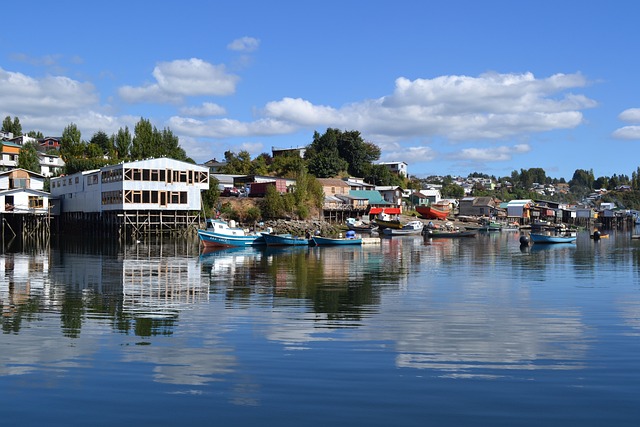|
In issue number thirteen of our collection we have gotten to know the legend of the Pillan and we’ve learned more about the origins and mythology of the mapuche people. To make sure you don’t forget what you’ve just learned, we invite you to go over the summary and answer a few questions. The Pillan– Mapuche deity of thunder as well as the spirit of fire. He watches over the elements and Man, whom he provides with good health, plentiful harvests and healthy animals. In addition, this god produces thunder and storms. For these reasons he is loved and feared, because if he gets angry the ground shakes and volcanoes erupt. 1. What kind of deity is the Pillan? Mapuches, people of the earth– The mapuches are the most numerous indigenous culture still surviving in our country today and they are perhaps the only one that still preserves their language and culture in some areas. – Their name comes from the word mapu, which means earth, and che, which means people, in other words, people of the earth. – They are mainly found in the rural areas of the Region of Araucania, although there are also significantly large groups in the Region of los Lagos and the Metropolitan Region. 1. What has this culture preserved to this day? Their origins– There are three theories regarding the origin of the mapuche people, but it remains a mystery to this day. 1. How many theories are there regarding the origin of the mapuche people? |
|
|
What you must know about the origins and mythology of the mapuche people
The legend of the Pillan and we’ve learned more about the origins and mythology of the mapuche people.
Lo más leído
Un día como hoy

Se funda el Club Social y Deportivo Colo Colo. En los primeros meses del año 1925, el Club Social y Deportivo Magallanes se encontraba en una grave crisis institucional, debido a problemas entre los dirigentes y algunos jugadores. Los más jóvenes del equipo, liderados por David Arellano, exigían una serie de peticiones que convertirían a Magallanes en un club profesional, las que fueron rechazadas. Arellano y estos futbolistas renunciaron al Club y en el bar “Quitapenas” optaron por formar una nueva institución de fútbol: Nació así el Colo-Colo Foot-Ball Club, nombre que identificaría lo verdaderamente chileno y popular. Más información aquí
En ausencia de Hernán Cortés, por encontrarse en una expedición por las Hibueras, sus lugartenientes en la Gran Tenochtitlan se disputan el gobierno de la Nueva España.
Muere el pintor italiano Pablo Veronese, llamado el «Veronés», integrante de la escuela veneciana y autor de «Las Bodas de Can», «El triunfo de Venecia» y «El rapto de Europa», entre otras. Destacó en la pintura al fresco y por sus cuadros suntuosos, animados, elegantes y armoniosos.
Batalla de Lexington, en Massachussetts, con la cual comienza la guerra por la Independencia de Los Estados Unidos.
Se firma la paz de Versalles, la cual pone fin al conflicto entre ingleses y estadounidenses y da independencia a estos últimos.
Un Cabildo Abierto en la ciudad de Caracas, Venezuela destituye al gobernador español Vicente Emparán y constituye una Junta de Gobierno.
Nace Henry Bessemer, ingeniero inglés que introdujo una verdadera revolución en la metalurgia del hierro, utilizando un procedimiento de transformación de la fundición en acero, empleado universalmente.
Fallece el poeta inglés George Gordon, mejor conocido como Lord Byron. Considerado figura clave del romanticismo que se distingue por sus múltiples aventuras amorosas y su rebeldía. Es autor de los poemas satíricos «Don Juan» y «El corsario», obras atormentadas, impetuosas y violentas como su carácter y su propia vida. Se incorpora a las filas de los nacionalistas griegos en su lucha contra los turcos, pero muere antes de entrar en combate.
Los 33 Orientales al mando de Lavalleja desembarcan en la costa uruguaya para liberar a su tierra del Brasil; su juramento es «Libertad o Muerte».
Se inaugura en Santiago, por encargo del Presidente Joaquín Prieto, la primera escuela de enseñanza superior, llamada «Escuela Modelo». Su primer director fue el educador José Bernardo Suárez, distinguido catedrático, fundador de las escuelas nocturnas para obreros y del Colegio Mercantil. Publicó además, varias obras históricas y didácticas, más su destacada «Guía del profesor primario».
Se embarcan los primeros colonizadores alemanes en el bergatín «Cartalina«.
Tratado de Clyton-Bulner entre Inglaterra y Estados Unidos por el que se acuerda la neutralización e internacionalización del futuro Canal de Panamá.
Nace Ole Evinrude, inventor del motor fuera de borda.
Muere Benjamín Disraelí, político y estadista británico, jefe del partido Tory (conservador), alterna en el poder con Gladstone. Expuso sus ideas políticas y religiosas en sus novelas «Vivian Grey» y «Sybil», entre otras.
Fallece Charles Darwin, naturista y fisiólogo inglés, autor de una célebre teoría sobre la evolución de las especies, conocida como «Darwinismo», que desarrolla en su obra «Origen de las especies por medio de la selección natural».
Nace Getulio Dornelles Vargas, presidente del Brasil entre 1930 y 1945, y entre 1950 y 1954.
Se funda el Instituto Pedagógico, primero en Sudamérica. Estaba destinado a preparar profesores para los liceos e impartía los cursos de castellano, latín, inglés y ciencias naturales. Los estudios duraban tres años.
Se corre la primera maratón de Boston, en los Estados Unidos, la carrera anual más antigua del mundo.
Nace el poeta mexicano Elías Nandino, autor de novelas como «Río de sombra», «Espejo de mi muerte», y de poemas como «Nocturna palabra». De 1956 a 1960 fue director de la revista «Estaciones».
Muere el sabio químico y físico francés Pierre Curie aplastado por un carromato, quien junto con su mujer Marie Sklodowska, realizan notables trabajos científicos. Ambos descubren el elemento radio, por lo que se les atribuye el Premio Nobel en 1903 y 1911.
Nace Glenn T. Seaborg, químico y premio Nobel estadounidense, conocido por su descubrimiento de nuevos elementos químicos.
El Gobierno uruguayo prohibe terminantemente el trabajo por la noche; los panaderos cierran los establecimientos como protesta.
Se funda el Club Social y Deportivo Colo Colo. En los primeros meses del año 1925, el Club Social y Deportivo Magallanes se encontraba en una grave crisis institucional, debido a problemas entre los dirigentes y algunos jugadores. Los más jóvenes del equipo, liderados por David Arellano, exigían una serie de peticiones que convertirían a Magallanes en un club profesional, las que fueron rechazadas. Arellano y estos futbolistas renunciaron al Club y en el bar “Quitapenas” optaron por formar una nueva institución de fútbol: Nació así el Colo-Colo Foot-Ball Club, nombre que identificaría lo verdaderamente chileno y popular.
El buque-escuela español Juan Sebastián, gemelo con nuestro buque-escuela La Esmeralda, emprende su primer viaje.
El haz, símbolo del partido de Mussolini, es incorporado al escudo nacional de Italia.
Nace en Medellín, Colombia, el pintor y escultor Fernando Botero.
Se presenta el nuevo modelo de la marca Citroen, el 7 CV, con tracción delantera, uno de los principales modelos de la década.
Se instituye el Día Panamericano del Indio, a propuesta del representante de México en el primer Congreso Indigenista Panamericano celebrado en Pátzcuaro, Michoacán.
Se crea en Madrid el Museo de América, a fin de exponer con fidelidad científica la historia del descubrimiento, conquista, civilización de América y las culturas de pueblos indígenas.
Las tropas alemanas de la «SS» penetran en el Ghetto de Varsovia, donde sofocan la sublevación de unos 60 mil judíos.
Nace el cantante y compositor brasileño Roberto Carlos.
Se casa la actriz Grace Kelly con el príncipe Rainiero de Mónaco renunciando así a su carrera cinematográfica. Años después, la ganadora de un «Oscar» en 1954, muere en un accidente automovilístico.
El Dalai Lama del Tibet huye ante la invasión china y busca refugio en la India.
Las fuerzas invasoras de exiliados cubanos se rinden a las milicias castristas en Bahía de Cochinos, Cuba.
La sonda Surveyor III se posa sobre la Luna y envía fotografías a Estados Unidos.
Nace el cantante mexicano Luis Miguel.
El presidente mexicano Luis Echeverría expone ante la UNCTAD en Santiago, el proyecto de Carta de Deberes y Derechos Económicos de los Estados.
Nace el futbolista brasileño Vítor Borba, conocido como «Rivaldo«.
Un grupo de antropólogos de la Fundación Científica Nacional investiga al sur de Chile, X Región, restos de una población de 13 mil años, considerada la más antigua encontrada en el hemisferio.
El presidente argentino Raúl Alfonsín pone fin a la insurrección militar iniciada el 14 de abril en Córdoba.
El gobierno de Nicaragua y los rebeldes antisandinistas firman la paz en ese país, tras acordar un cese al fuego definitivo, y el armisticio entre el Frente Sandinista de Liberación Nacional y la Contra nicaragüense.
La ayuda de Estados Unidos a los kurdos en Irak llega a su máxima expresión y se advierte al gobierno iraquí de Saddam Hussein, sobre los problemas que se ocasionarían en caso de seguir los ataques.
Puerto Rico es galardonado con el Premio Príncipe de Asturias de las Letras 1991, por su defensa ejemplar del idioma español, declarado como el único y oficial del país.
Después de permanecer 51 días en Waco, Texas, la secta davidiana del líder David Koresh, sostiene un enfrentamiento con autoridades del FBI; mueren 85 personas y entre ellas 17 niños, quedando el lugar arrasado por un incendio.
Un atentado vuela la sede federal de Oklahoma donde mueren 167 personas.
Seis mausoleos incas son descubiertos por investigadores del Instituto Nacional de Cultura (INC) de Perú, en un paraje conocido como «Laguna de los Cóndores«.
Muere el poeta y ensayista mexicano Octavio Paz, considerado uno de los escritores más importantes del mundo. Junto con Juan Rulfo y Carlos Fuentes representa la tríada ilustre de la literatura mexicana del siglo XX. Obtuvo el premio Nobel de Literatura 1990. Entre sus obras más destacadas se encuentran «El laberinto de la soledad», «Piedra de sol» y «Sor Juana Inés de la Cruz o las trampas de la fe».
El ejército ruso lanza una ofensiva de gran envergadura en Chechenia para acabar con la guerra de guerrillas. Las autoridades rusas informan que los soldados federales enterraron 800 cadáveres de rebeldes hallados entre las ruinas del poblado de Komsomolskoye, escenario de encarnizados combates.
El transbordador espacial Endeavour parte hacia la Estación Espacial Internacional, donde instalarán un brazo robot construido en Canadá.
La Corte Suprema exonera al ministro Luis Correa Bulo por faltas a la ética en su comportamiento funcionario. Es una resolución inédita, pues es la primera vez que el alto tribunal expulsa a uno de sus integrantes.
La Iglesia católica eligió el martes 19 de abril de 2005 como Papa al cardenal alemán Joseph Ratzinger, de 78 años, quien se llamará Benedicto XVI.




